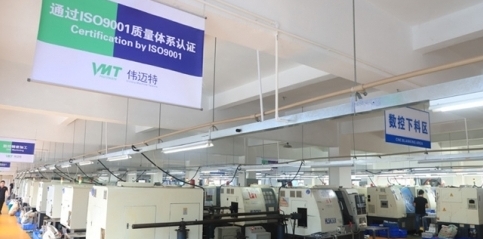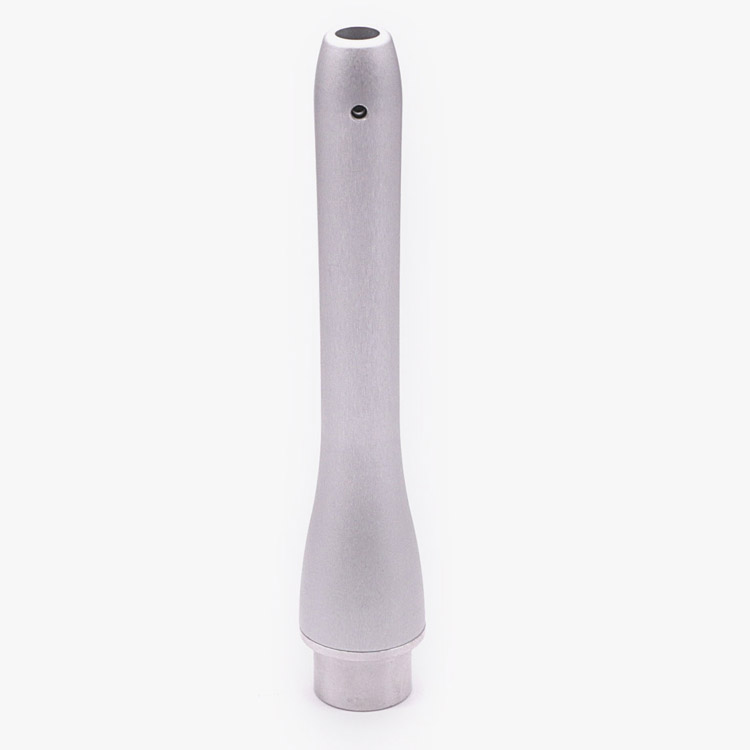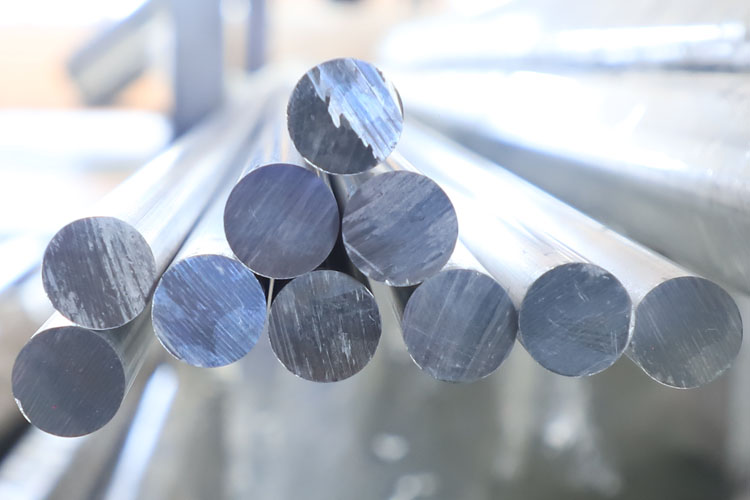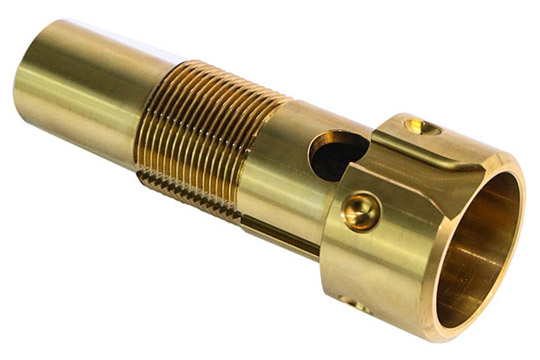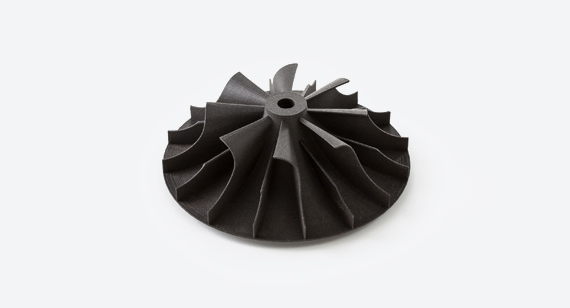VMT’s blogs aim to share our practical experience and knowledge accumulated during the manufacturing and product development process. Our goal is to use these articles to help you improve product design and increase your understanding of CNC machining, 3D printing, rapid prototyping, low-volume manufacturing, and surface treatment technologies. The information we provide is designed to provide actionable guidance and insights for your CNC machining projects.
CNC Turning Guide: Process, Material, Advantages
CNC manufacturers use a combination of machining processes, including CNC turning, in their production process. CNC turning precisely removes material by rotating the workpiece in conjunction with the cutting tool, and mastering its basics is essential to improving production efficiency and product quality. This article will take you through the CNC turning process, the types of CNC turning operations, and the advantages of CNC turning.
What is CNC turning?
CNC turning is a high-precision and high-efficiency machining method that utilizes a computer control system to manage the lathe for rotational cutting of the workpiece precisely. This turning manufacturing process is ideal for creating cylindrical or rotationally symmetrical parts, and CNC turning machines can handle a wide variety of workpieces in terms of shape and size.
The ability to control turning operations with high accuracy makes CNC turning and lathing an essential process in industries that demand precision, such as aerospace, automotive, and medical.
CNC Lathes vs CNC Turning Centers
CNC Lathes are used for simple turning tasks on round parts like shafts and bushings. The machine spins the part while a cutting tool shapes it. They’re easy to use, cost-effective, and best for low to medium production runs.
CNC Turning Centers are more advanced. They can move in multiple directions and perform turning, milling, drilling, and more. All in one setup. With features like live tooling and sub-spindles, they’re ideal for complex parts and high-volume production.
CNC Turning Process
The CNC turning process involves several key steps to ensure parts are accurately made with high quality. From preparing the material to final inspection, each stage plays an important role in successful machining.
Material preparation: Before CNC turning, you need to carefully prepare the material to be processed. This includes selecting the appropriate material type according to the product design requirements, and performing preliminary cutting, cleaning and drying of the material to ensure the cleanliness of the material surface and the accuracy of the size.
Equipment selection and debugging: Selecting a suitable CNC lathe is the key to ensuring machining quality. This requires consideration of factors such as the machine’s machining accuracy, maximum machining diameter, spindle speed, and power. During the debugging process, it is necessary to accurately adjust various machine parameters, such as tool position, cutting speed, feed rate, etc., and perform tool setting operations to ensure the accurate relative position between the tool and the workpiece.
Machining sequence planning: The processing sequence of CNC turning usually includes programming, program transmission, machine tool setting, trial cutting verification and formal machining. CAD/CAM software is used for programming to convert the design drawings into program codes that can be recognized by the machine tool, and then transmitted to the machine tool control system through the interface. Before formal processing, the correctness of the program is verified by trial cutting to ensure the rationality of the machining path and cutting parameters.
Quality inspection and correction: After processing, the workpiece needs to be strictly inspected and evaluated for quality. Use measuring tools or testing equipment to measure the size, shape and position tolerance, surface roughness, etc. of the workpiece to ensure that the product meets the design requirements. If unqualified products are found, the reasons must be analyzed in time and corresponding corrective measures must be taken.
Types of CNC Lathes
As the core machine tool of the turning process, the CNC lathe has many types, each type is designed for specific machining needs. The following are four common types of CNC lathes, which play a key role in various processing projects:
| Type | Key Features | Advantages | Typical Applications |
|---|---|---|---|
| Horizontal CNC Lathe | – Most commonly used type – Horizontal spindle orientation – Can perform boring |
– High processing efficiency – Simple setup – Good for long or symmetrical parts |
Shafts, bushings, simple cylinders, general turning tasks |
| Vertical CNC Lathe | – Workpiece mounted vertically – Chuck holds the part from below |
– Saves floor space – Stable when processing large/heavy parts – Good chip removal |
Brake discs, large gears, heavy flanges, parts with short lengths |
| Horizontal Turning Center | – Multi-function machine – Combines turning, drilling, and milling – Horizontal layout |
– All-in-one processing – Improved accuracy and efficiency – Automatic tool changes |
Complex parts with multiple features, automotive components |
| Vertical Turning Center | – Vertical chuck placement – Combines turning and milling functions |
– Ideal for large or odd-shaped workpieces – More stable due to low center of gravity |
Large casings, aerospace parts, turbine housings, heavy-duty machining |
Advantages of CNC Turning
CNC turning has many advantages that make it the preferred machining method across a wide range of industries. From precision and quality to flexibility and efficiency, here are the main benefits.
1. High Precision and Quality:
High precision: CNC turning can achieve very high machining accuracy, usually within a few microns, thanks to the tool path and cutting parameters under precise computer control.
High quality: Due to the stability and precision of the machining process, CNC turning can produce parts with high surface quality and high dimensional accuracy, meeting the high-precision requirements of industries such as aerospace and medical devices.
2. Complex Parts Processing Capabilities:
Multi-process machining: CNC turning can process parts that need to be processed in multiple processes after one clamping and positioning, reducing the number of times the workpiece is repositioned and clamped, and improving processing efficiency.
Complex shape processing: It can process parts with particularly complex contour shapes or difficult-to-control dimensions, such as mold parts, shell parts, and complex curve parts described by mathematical models and three-dimensional space surface parts.
3. Automation and Efficiency:
High degree of automation: During the CNC turning process, the operator only needs to write programs and monitor the operation of the machine tool, without directly participating in the processing process, which reduces labor costs and improves production efficiency.
High production efficiency: CNC machine tools can process at higher speeds and feed rates while reducing human errors and downtime, further improving processing efficiency.
4. Flexibility and Adaptability:
Strong flexibility: CNC turning processing has strong adaptability and can flexibly respond to the processing needs of parts of different shapes and sizes.
Wide range of applications: It can not only process parts that are difficult to process with ordinary lathes, but also process high-precision and high-difficulty parts, such as small-mouthed and large-bellied internal surface parts.
Materials Suitable for CNC Turning
Metal Materials:
1. Aluminum Alloy
Aluminum alloy is widely used in aerospace, automobile manufacturing, electronics and construction due to its lightweight, high strength, strong corrosion-resistance, good conductivity and non-magnetic properties. It is suitable for making various precision parts and components, such as engine parts, body structural parts, electronic equipment housings, etc.
2. Stainless Steel
Stainless steel is known for its high strength, high ductility, wear resistance and excellent corrosion resistance, and is commonly used in industries such as medical, food, beverage, and aerospace. It is suitable for making parts that require high strength and corrosion resistance, such as surgical instruments, food machinery parts, and chemical equipment accessories.
3. Steel
Mild steel: easy to process, often used to make mechanical parts, steel bars, chains, etc.
Hard steel: has higher hardness and strength, suitable for occasions requiring higher wear resistance and strength, such as knives, molds, bearings, etc.
4. Copper and Copper Alloys
Brass is often used in the fields of precision instrument manufacturing, ship parts production, musical instruments and craft products due to its ductility, wear resistance, corrosion resistance and good conductivity. It is suitable for making gears, bearings, conductive parts and decorations.
5. Titanium Alloy
Titanium alloys have an important position in aerospace, shipbuilding and other fields due to their low density, high strength, good corrosion resistance and high-temperature resistance. They are suitable for making high-demand parts and structures, such as aircraft engine components and spacecraft structures.
Non-metallic materials:
1. Engineering Plastics
Engineering plastics such as ABS, PC, POM, etc. have excellent physical and mechanical properties and are easy to process. They are widely used in the fields of electronics, automobile manufacturing, medical equipment, etc., and are suitable for making housings, parts and structural parts.
2. Nylon
Nylon is often used to make mechanical parts such as gears, bearings, and transmission components due to its wear resistance, oil resistance, chemical corrosion resistance, and high strength.
In Conclusion
CNC turning technology is an important part of the manufacturing industry and is widely used in various fields. It is highly versatile, can accurately control dimensions, and is suitable for large-scale production. Many CNC manufacturers use CNC machine tools, which are automated through pre-programmed software, making the production process more efficient, fast, and accurate.
As experts in CNC machined part manufacturing, VMT provides high-quality custom milling services to meet your specific precision component needs. With advanced CNC machining equipment and rich manufacturing experience, we can perform precision processing according to your requirements and drawings. Whether it’s complex geometries, high-precision tolerance requirements, or special material selections, VMT can provide custom solutions.
Frequently Asked Questions About CNC Turning
Differences Between CNC Lathe and CNC Turning Center?
The main difference between CNC lathes and CNC turning centers lies in their processing capabilities and flexibility. CNC lathes focus on rotational processing and are suitable for shaft and disc parts. They have a relatively simple structure and are suitable for small and medium-scale production. CNC turning centers add milling, drilling, boring and other functions on this basis. They have higher processing flexibility and precision, can complete multiple processes in one clamping, and are suitable for large-scale, high-precision processing of complex-shaped parts, but the cost and maintenance are also relatively high.
What are the three Main Motions In A Turning Operation?
Main motion: The workpiece rotates at high speed driven by the lathe spindle, providing the necessary linear speed for cutting.
Feed motion: The tool moves linearly to gradually remove excess metal from the workpiece to achieve the required shape and size. The direction can be vertical, horizontal or diagonal.
Tool engagement: The depth of the tool cutting into the workpiece, which affects cutting efficiency, cutting force and tool life.
Is Turning Cheaper Than Milling?
The cost comparison between turning and milling is not absolute and is affected by factors such as materials, equipment, time, difficulty, and batch size. Turning is suitable for rotating parts, is efficient and suitable for high volumes, and may be more economical; milling excels at complex shapes, and the cost varies depending on flexibility. It needs to be comprehensively evaluated based on specific tasks.

